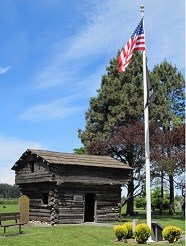
Photo by Lynn Hyde Ebey's Landing National Historical Reserve is unique to the National Park System, celebrating the rich history and the working rural landscape of central Whidbey Island. From the enabling legislation that created Ebey's Landing NHR in 1978:"There is hereby established the Ebey's Landing National Historical Reserve (hereinafter referred to as the "reserve"), in order to preserve and protect a rural community which provides an unbroken historical record from nineteenth century exploration and settlement in Puget Sound to the present time, and to commemorate – 1. ...the first thorough exploration of the Puget Sound area, by Captain George Vancouver, in 1792; 2. ...settlement by Colonel Isaac Neff Ebey who led the first permanent settlers to Whidbey island, quickly became an important figure in Washington Territory, and ultimately was killed by Haidahs from the Queen Charlotte Islands during a period of Indian unrest in 1857; 3. ...early active settlement during the years of the Donation Land Law (1850-1855) and thereafter; 4. ...and the growth since 1883 of the historic town of Coupeville." Explore the Reserve and discover what makes this place special in the history of this country. Ebey's Forever! Guides, Maps and Visitor Information 
Visitor Guide to Ebey's Landing National Historical Reserve - Visiting the Reserve? Visitor Guides are available at the office of the Trust Board (162 Cemetery Rd., Coupeville, WA); Island County Historical Museum and at the Coupeville Chamber of Commerce. The Visitor Guide offers a look at what the Reserve is and what you can do while visiting! 
Discover the Stories that make the Reserve a part of the Great American Landscape 
The Jacob & Sarah Ebey House - Isaac Ebey wrote to his father, Jacob, that he'd found a "...Paradise of Nature" on Whidbey Island. So Jacob, his wife Sarah and other family members made the journey like so many across the Oregon Trail, and settled on Whidbey Island at a place Jacob named Sunnyside. 
The Ferry House - Perhaps no other building is as iconic and represents Ebey's Landing National Historical Reserve as well as the Ferry House. Built in the early 1860s by Winfield Scott Ebey, this public house first welcomed visitors to Whidbey Island at the front gate of Isaac Ebey's 1850 donation land claim. 
Traces of the Chinese in the Reserve - Between the 1880s and the 1920s, Whidbey Island was home to a Chinese community centered on Ebey's Prairie farmlands. For many years, their stories were lost. But, as the experiences of these Asian immigrants are uncovered, they bring a light to a fascinating piece of the island's heritage. |
Last updated: February 9, 2024

